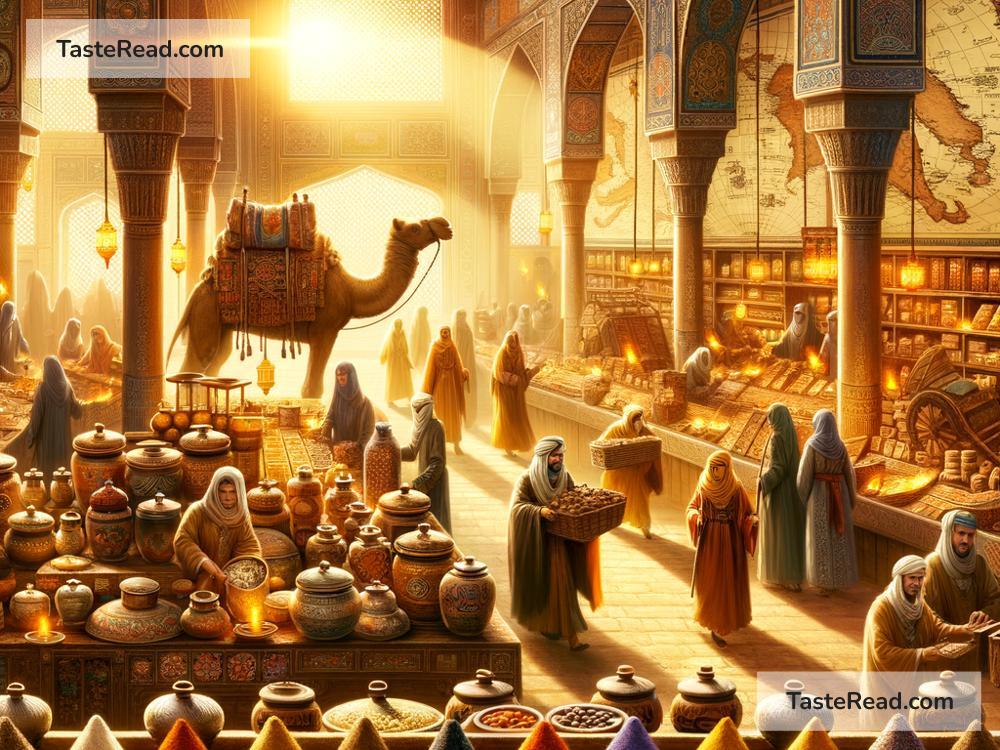How Spices Became Treasures of Ancient Trade
Spices have been a part of human history for thousands of years. They are not just flavorful ingredients used in cooking; they were once so valuable that they were considered treasures. In ancient times, spices played a huge role in trade, shaping economies, cultures, and even empires. But how did tiny seeds, barks, and powders become so important and precious? Let’s explore the fascinating journey of spices and their role as treasures of ancient commerce.
What are Spices?
Spices are parts of plants, such as seeds, roots, flowers, or bark, used to add flavor, aroma, or color to food. Some common spices include cinnamon, pepper, cloves, nutmeg, and ginger. Today, they are widely available in supermarkets for low prices, but in ancient times, they were rare and costly—often worth more than gold! Their unique qualities made them valuable not only for cooking but also for medicinal and religious uses.
The Mystery and Allure of Spices
Imagine living in ancient times without many sources of flavor for your meals. Without refrigeration, food didn’t stay fresh for long, and spices like pepper and cinnamon helped preserve it, making a huge difference in daily life. Besides their practical uses, people believed spices had magical and medicinal properties. For example, ginger was used to treat stomach problems, while cloves were thought to ease toothaches. In some cultures, spices were even burned as offerings to the gods.
But why were spices so rare? Most spices grew only in tropical regions, far from Europe, the Middle East, and other major civilizations. Spices like nutmeg and cloves came from islands in present-day Indonesia, cinnamon was native to Sri Lanka, and black pepper was grown in India. This made them incredibly hard to find for people who lived elsewhere.
The Spice Trade Begins
As civilizations developed, people figured out ways to travel long distances to get valuable goods. The search for spices helped create some of the world’s first trade routes. Traders would load their camels or ships with spices and travel across deserts, mountains, and oceans to sell them in foreign lands. These trade routes connected Asia, the Middle East, and Europe, creating networks of commerce and cultural exchange.
The Silk Road, one of the most famous ancient trade routes, wasn’t just about silk; spices, along with other treasures like gold and gemstones, were transported along its paths. Arab and Indian merchants played key roles in the spice trade, selling goods in bustling markets from Baghdad to Rome. Similarly, sea routes across the Indian Ocean carried spices to Egypt, Greece, and Persia.
Because spices were so rare and hard to obtain, their prices were extremely high. Only the wealthy could afford them, and they were often seen as a symbol of status and luxury. Spices became an important part of royal feasts and fancy dinners. Kings, queens, and nobles prized spices as much as jewels.
The Role of Empires
As the demand for spices grew, empires started competing for control over spice-producing regions. The Roman Empire was heavily involved in the spice trade, importing pepper from India in massive amounts. Roman markets were filled with exotic spices, which were used in cooking, cosmetics, and medicine.
Later, during the Middle Ages, European countries became obsessed with finding faster and cheaper ways to access spices. By then, Arab traders were the middlemen, controlling much of the trade and making prices even higher. This frustration eventually led European explorers to search for direct sea routes to Asia, which changed the course of history.
The Age of Exploration
In the 15th century, the European Age of Exploration began. Adventurers like Vasco da Gama and Christopher Columbus set sail in search of spice-rich lands. Da Gama’s journey to India in 1498 opened up new trade routes for Portuguese merchants, giving Europe access to spices like black pepper and cardamom without relying on middlemen.
Columbus’s search for spices took him in a completely different direction—westward toward the Americas. While he didn’t find the spices he was looking for, his voyages led to the discovery of new world crops like chili peppers, which later became important in global cuisine.
By the 16th century, the Dutch and English also entered the spice trade, building powerful trading companies, such as the Dutch East India Company, to control the production and sale of spices. Wars were fought, and treaties were signed over control of spice-producing islands, showing just how valuable they were.
Spices Today: From Treasures to Everyday Ingredients
For centuries, spices were treated as luxuries that only the rich could afford. But as transportation and farming methods improved, spices became easier to grow and distribute. Today, you can find spices in every supermarket, and they’ve become an affordable part of everyday cooking. Though they are no longer as rare or expensive, their historical importance remains fascinating.
Spices may be commonplace now, but their journey from exotic treasures of ancient trade to universal kitchen staples reminds us of how interconnected the world has always been. They played a crucial role in bringing people, cultures, and economies together long before airplanes, the internet, or globalization. Next time you sprinkle cinnamon on your oatmeal or add a pinch of pepper to your soup, you’re enjoying a little piece of history—a taste of ancient adventure and trade.
Conclusion
Spices were more than just ingredients; they were symbols of wealth, power, and discovery. They brought far-off regions closer, sparked exploration, and shaped the world in countless ways. From the bustling markets of ancient Rome to the high seas of European explorers, spices built bridges between civilizations. Though they are no longer treasures of trade, their legacy lives on, reminding us of the flavors that once changed the world.


